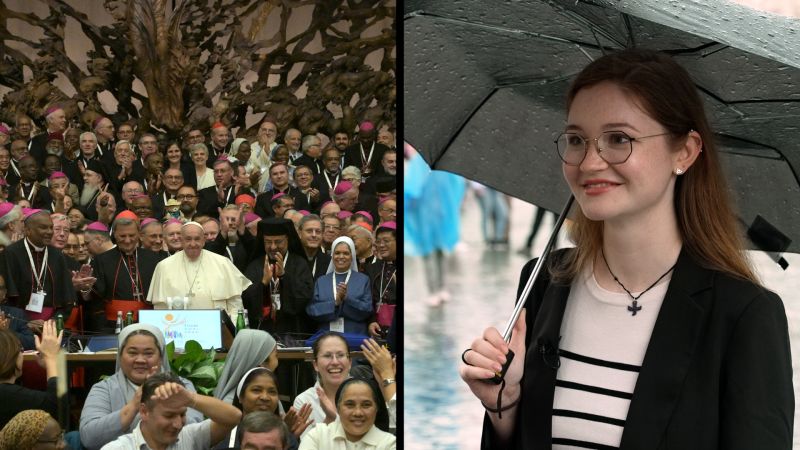
The Pope has shown openness to greater roles for women – but there’s pressure for him to go further
A sense of urgency has been growing after the role of women emerged as a dominant theme when Catholics from across the globe were canvassed for their views ahead of a meeting of bishops and lay people – a synod – which formally concluded Sunday.
The final Synod assembly document, approved by Pope Francis, said women must be given all the opportunities that church law provides to act as leaders, but left the possibility of ordaining women as deacons as an “open” question which needs further reflection.
Frustrations about the slow pace of reform bubbled into the open during the assembly when the pope’s doctrine adviser ruled out ordaining women as deacons and then failed to turn up to a meeting on the topic. He later apologized and held a 90-minute meeting with members of the assembly.
Some are unimpressed by what they see as the Vatican kicking the topic of deacons into the long grass.
Phyllis Zagano, a research professor at Hofstra University in New York and expert on female deacons, said that “there is abundant evidence of the sacramental ordinations of women as deacons in the Church, East and West, to the 12th century” and that “eventually a decision must be made.”
Francis has also faced criticism recently for expressing what one Belgian Catholic university denounced as “reductive” views on the role of women in the church. In an interview earlier this year, he ruled out the possibility of ordaining women deacons, who can carry out functions like a priest apart from saying Mass and hearing confessions.
The problem in the church is exacerbated given women make up a majority of churchgoers while an all-male hierarchy controls decision making. Furthermore, Catholic teaching bars women from ordination to the priesthood, a decision that Francis has maintained, although he has allowed studies of female deacons.
During previous papacies the question of ordaining women was not even up for discussion. The big difference now is that the 87-year-old Argentinian pontiff has shown he is willing to listen carefully to the voices of Catholics.
During his pontificate, Francis has also been trying to make cracks in the Vatican’s glass ceiling. He has chosen women to senior positions in the church’s central administration, including a religious sister to help run the synod and the first women members to sit on the board of a powerful Vatican department that decides on bishop appointments.
For the first time, women were also included as voting members, with 54 female voters among more around 360 delegates. One of those was Julia Oseka, 23, who is studying theology and physics at St Joseph’s University in Philadelphia, Pennsylvania, and is the youngest woman ever to be a voting member of a Vatican synod.
Oseka added that while she sometimes felt “frustrated” about the “slow pace” of decisions, some parts of the church “struggle” when it comes to the inclusion of women, and it was important to maintain unity.
Francis’ approach is also informed by the resistance to any reform to women’s roles: The declaration from the Vatican assembly on women received 97 “no” votes, the most of any section in the final document.
She said the pope had recognized that the question of female deacons cannot be “closed” and that it was important for the Catholic Church to send a message to the world where there is rising discrimination and violence against women. “If we don’t take a strong stand, it’s contradicting our own message,” she said.
Nevertheless, for a church which thinks in centuries what may seem like small steps to those on the outside are major leaps forward for many inside.
